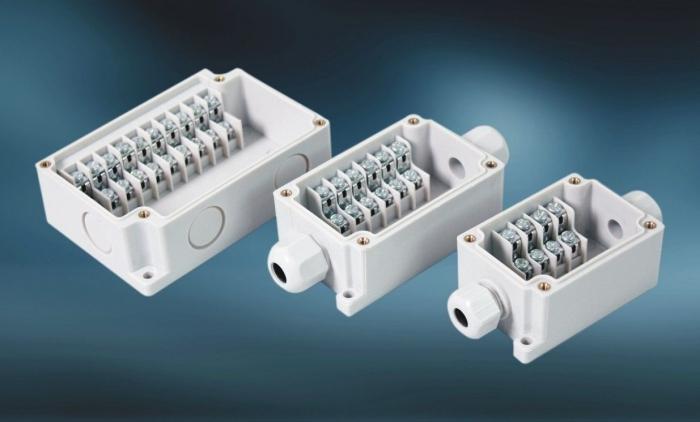More than a hundred years ago, with the introduction of electricity into everyday life, mankind finally accepted the technogenic direction of our civilization. Now we are surrounded by various electrical appliances and equipment everywhere. Almost every house has electrical wires, and if the housing is located in hard-to-reach areas, then people find a way out of the situation: they install wind generators, solar panels and so on. But not all people know that almost any electrical appliance needs an element such as a terminal box. What is it and what is it for? In the article we will try to answer these questions.
The terminal box is a rectangular or round box with a terminal block inside. Typically, the block is designed for a maximum cross-section of a switched wire (35 mm) and for the number of direct connections - 7-12 pcs.
The terminal box, depending on the purpose, is:
- for dry rooms;
- for objects with an aggressive environment (chemical production);
- for external use (temperature and moisture resistant).
Terminal box classification
1. According to the installation method there are:
- for open installation;
- for concealed installation in concrete;
- for concealed installation in plaster, drywall.
2. Depending on the materials used:
- made of polypropylene, ABC plastic, self-extinguishing PVC, etc .;
- from metals.
3. According to the degree of protection (dust, moisture, etc.):
- IP20 boxes;
- IP44, IP54, IP65;
- explosion proof.
4. Share on climatic modification:
- for external use U1;
- for placement under U2 canopy;
- for rooms U3.
5. Depending on the form of execution, there are:
- rectangular;
- square;
- round.
6. By the presence of terminal blocks:
- with terminal blocks;
- without terminal blocks.
You should also mention the instrument boxes. They are slightly larger in size than terminal boxes. They allow you to place small devices, switches, sockets in addition to pads.
The terminal box may have hermetic seals in its housing for the supply of wires and cables. Often the glands are replaced by metal or plastic pipes. Seals can be rubber with cut concentric circles or plastic, allowing you to adjust the mounting hole. The use of gaskets can significantly increase the tightness of the product. The box is closed by a lid, which is attached to the body with screws or latches with gaskets.

All terminal boxes, depending on the purpose, application and design, have different markings. This allows the consumer to quickly select the desired product. After all, a terminal junction box can be used both under water and at an altitude (say, five thousand meters above sea level), it can be sewn up in the wall, or it can be constantly exposed to aggressive influences in the chemical industry. All this information is contained in the product code. For example, an explosion-proof terminal box is marked 1ExeIIT5. There are many types of markings even among explosion-proof boxes. The marking also encodes information about the degree of protection, the place of use of the product, and much more.